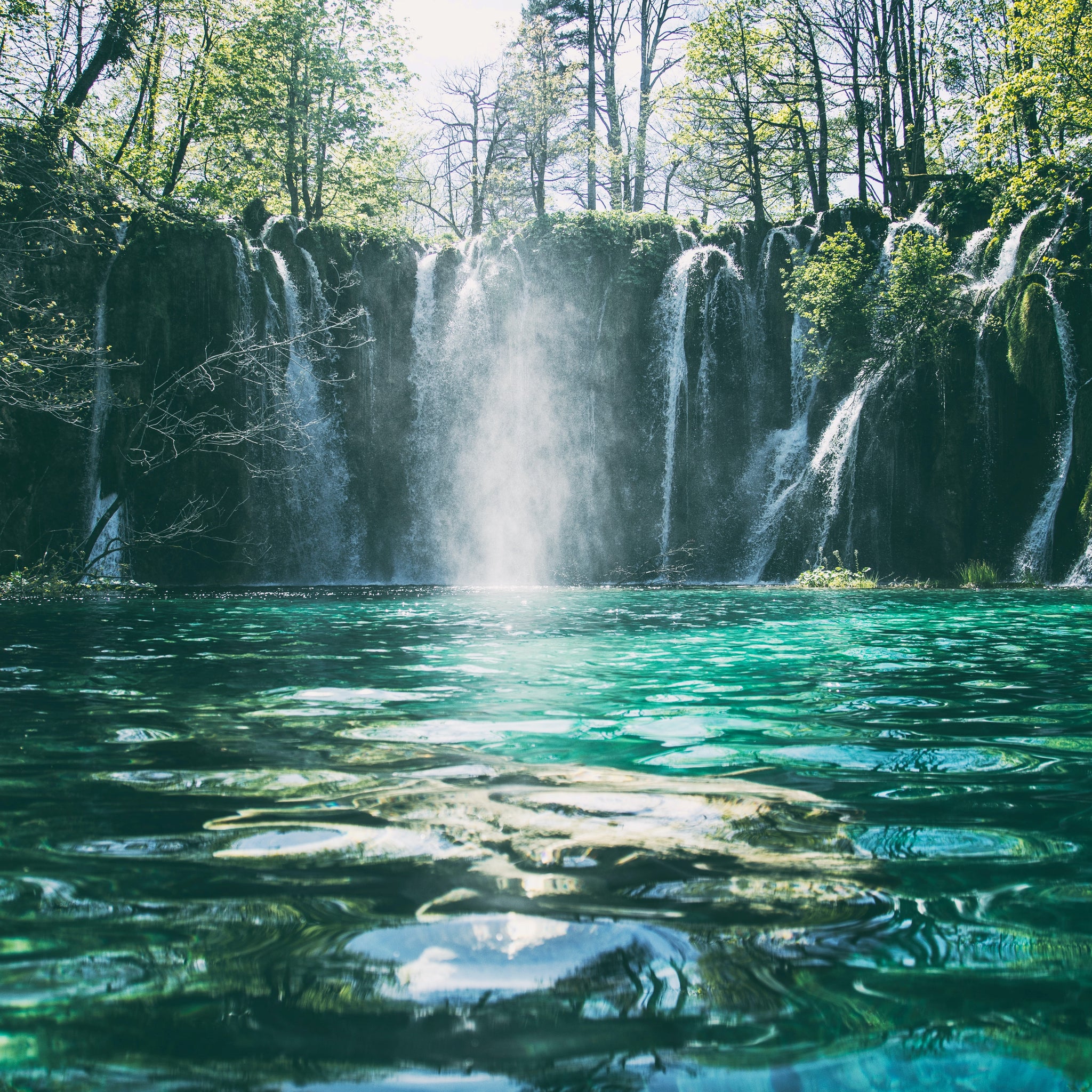

Twenty percent of all fresh surface water is in one lake, Lake Baikal in Asia. Freshwater represents only about three percent of all water on Earth and freshwater lakes and swamps account for a mere 0.29 percent of the Earth's freshwater. You might be surprised at how little of Earth's water supply is stored as freshwater on the land surface, as shown in the diagram and table below. Not only do they supply the human population, animals, and plants with the freshwater they need to survive, but they are great places for people to have fun. To many people, streams and lakes are the most visible part of the water cycle. Usable fresh surface water is relatively scarce And if you check the price of lakefront property in your part of the world, it probably sells for much more than other land. In this dry part of the world, surface-water supplies are essential for human communities. But the interesting thing in this picture are the lights following the Nile River and Nile Delta in Egypt (the area within the purple-outlined box). The most obvious thing you can see is that people live near the coasts, which, of course, is where water, albeit saline, is located. Just ask the billions of people living on Earth! Here's a satellite picture of the world at night.

You might think that fish living in the saline oceans aren't affected by freshwater, but, without freshwater to replenish the oceans they would eventually evaporate and become too saline for even the fish to survive.Īs we said, everybody and every living thing congregates and lives where they can gain access to water, especially freshwater.

And, since groundwater is supplied by the downward percolation of surface water, even aquifers are happy for water on the Earth's surface. Dinosaurs likely gathered at the local watering hole 100 million years ago, just as antelopes in Africa do today. Water on the land surface really does sustain life, and this is as true today as it was millions of years ago. Nile Valley in Egypt-Water makes the desert bloom as seen in this satellite picture of the Nile Valley in Egypt. Sources/Usage: Some content may have restrictions. Glaciers are what made the Great Lakes not only "great," but also such a huge storehouse of freshwater. And the layout of the landscape was different before and after the last ice age, which influenced the topographical layout of many surface-water bodies today. During the last ice age when glaciers and snowpacks covered much more land surface than today, life on Earth had to adapt to different hydrologic conditions than those which took place both before and after. So, the amount and location of surface water changes over time and space, whether naturally or with human help. Outflows from lakes and rivers include evaporation, movement of water into groundwater, and withdrawals by people. Inflows to these water bodies will be from precipitation, overland runoff, groundwater seepage, and tributary inflows. The amount of water in rivers and lakes is always changing due to inflows and outflows. The definition of freshwater is water containing less than 1,000 milligrams per liter of dissolved solids, most often salt.Īs a part of the water cycle, Earth's surface-water bodies are generally thought of as renewable resources, although they are very dependent on other parts of the water cycle. Surface water includes the lakes, reservoirs (human-made lakes), ponds, streams (of all sizes, from large rivers to small creeks), canals (human-made lakes and streams), and freshwater wetlands. Just ask your neighbor, a tomato plant, a trout, or mosquito. One part of the water cycle that is obviously essential to all life on Earth is the freshwater existing on the land surface. Lakes are valuable natural resources, both for human and non-human life.


 0 kommentar(er)
0 kommentar(er)
